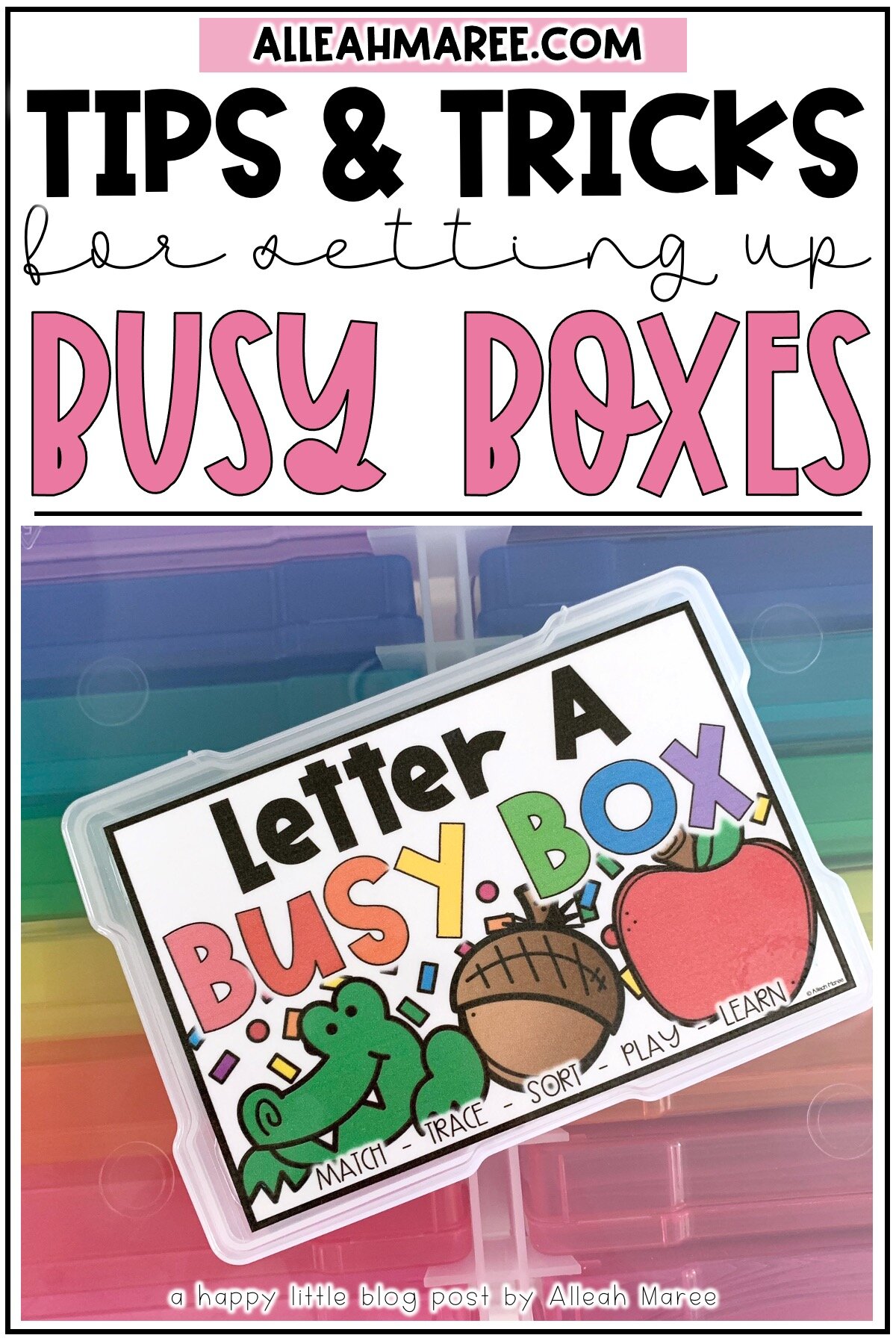Busy Box 101: Tips to Set Up Busy Boxes
So, you’re a fellow busy box fan, huh? Oh YAY!! Me too! These boxes are one of the most fun ways for my little guy and I to play and learn together. They’re quick, engaging, and so simple to switch out from month to month!
I’m sharing a few quick steps and tips to setting up your boxes so they’re ready for your little ones to grab one at any time they need a fun activity to learn and play with.
** This post contains affiliate links. If you purchase any of the products I already love and am linking for you, I’ll receive a small percentage of the profit that the website makes from your purchase at no extra cost to you. :) Such a win-win-win! **
1. Purchase all the materials you’ll need.
Step one is to buy all the things you need to create your busy boxes! You’ll need to have the following things to set up your boxes:
These are all the things I use to put all the different kinds of busy boxes together when creating a new one.
2. Print out busy box pages.
After you purchase the busy box activities you want, print them out at home or at your closest office store. I like to print mine in color because it makes them more engaging and interesting for little ones in my opinion, but you can definitely print them in black and white if you choose to.
3. Cut out all the mats & cards.
Cut out all the mats (larger rectangles) and the small cards by cutting on the solid black lines. You can definitely use manipulatives, like magnetic letters, letter tiles, or pattern blocks, if you don’t want to use ALL of the cards included in the resources.
My little guy even likes to use random manipulatives for these boxes, like mini erasers, pom poms, and other small objects, like goldfish or cereal pieces too! You can definitely get creative with what you include inside.
4. Laminate!
Laminating each piece of your busy box is definitely an “optional” step, but I highly recommend it if you want your kids to be able to use them more than once. Laminating each part helps the pieces to stay neat and sturdy through attaching to the mats and pulling from the mats.
Okay, so a couple tips about laminating. I’m “that girl” who cuts each piece from the paper, laminates each piece, and then cuts them all out again. I know it takes extra time, but I can’t deal with laminating something and THEN cutting it open afterward. In my mind, I’m laminating it to keep it sealed and secure, so cutting it up after it’s been laminated opens that sealed plastic. HAHA! Anyway, that’s how I laminate our pieces, but you can obviously do it however works best for you. 🙂
LAMINATING TIP: Use double-sided tape to secure each mat and card to the laminating pouch, as seen above. This way, none of the mats and cards slide around in the pouch while getting it into the laminator. 👍🏻
5. Secure cover to the top of the photo box.
After cutting out and laminating the cover page, attach the cover to a photo box using double sided tape or a hot glue gun.
6. Stack cards on each mat and toss them in the box.
To keep things organized, I keep all the cards that go with each mat lying on top of the mat they correspond with when I put it into the box. Then, when I pull out each activity, the cards are sitting on top of the mat and are ready to use right away.
We use the sticky tack putty to attach the cards to the mats where they belong! This is WAY cheaper than using velcro for EVERY space where a card needs to be attached, it can be used over and over again, and it helps all the mats fit into the photo box without getting too bulky.
7. Model and get to learning!
The last step is to model how each of the activities inside the box is completed for your little learners to see. I recommend introducing only one or two activities at a time and allowing little ones to practice them often on their own.
As they show that those activities are getting simpler, you can add introduce new activities and build up to being able to complete all the activities in the box on their own. And because most of the activities from one box to the next are very similar, hopefully they’ll understand how to complete the activities in the next box a little more quickly when you switch them out.
I hope this was a helpful, step-by-step process for you to set up your own busy boxes at home or in your classrooms. These boxes make great independent work centers, small group activities, or simply a fun way for early finishers to stay engaged and learning!
Please feel free to leave a comment or email me if you have questions or ways I can help you get started learning with busy boxes. Hope your little learners have so much fun with these!
Cheering you on!
Wanna follow me on TPT? CLICK HERE!
Is Instagram more your thing? CLICK HERE!
To peek at my Facebook page, CLICK HERE!
















